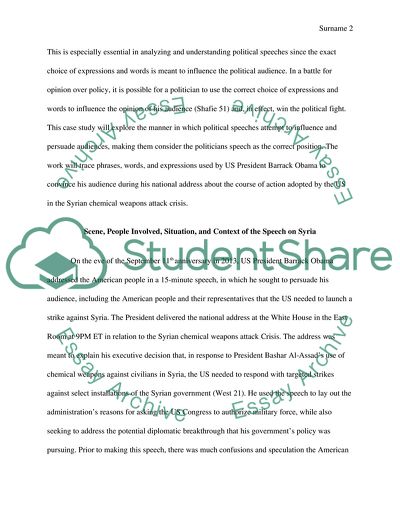Cite this document
(Anthropological Analysis of Obamas Speech on Syria Case Study Example | Topics and Well Written Essays - 3000 words, n.d.)
Anthropological Analysis of Obamas Speech on Syria Case Study Example | Topics and Well Written Essays - 3000 words. https://studentshare.org/anthropology/1818078-anthropological-analyse-of-president-obamas-speech-addressed-to-the-nation-on-syria
Anthropological Analysis of Obamas Speech on Syria Case Study Example | Topics and Well Written Essays - 3000 words. https://studentshare.org/anthropology/1818078-anthropological-analyse-of-president-obamas-speech-addressed-to-the-nation-on-syria
(Anthropological Analysis of Obamas Speech on Syria Case Study Example | Topics and Well Written Essays - 3000 Words)
Anthropological Analysis of Obamas Speech on Syria Case Study Example | Topics and Well Written Essays - 3000 Words. https://studentshare.org/anthropology/1818078-anthropological-analyse-of-president-obamas-speech-addressed-to-the-nation-on-syria.
Anthropological Analysis of Obamas Speech on Syria Case Study Example | Topics and Well Written Essays - 3000 Words. https://studentshare.org/anthropology/1818078-anthropological-analyse-of-president-obamas-speech-addressed-to-the-nation-on-syria.
“Anthropological Analysis of Obamas Speech on Syria Case Study Example | Topics and Well Written Essays - 3000 Words”. https://studentshare.org/anthropology/1818078-anthropological-analyse-of-president-obamas-speech-addressed-to-the-nation-on-syria.


